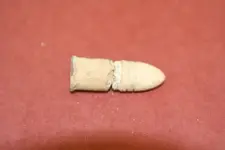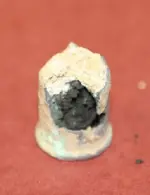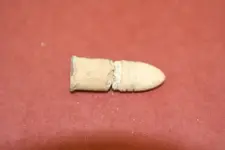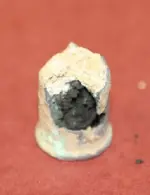This is what I was referring to:
http://www.du.edu/~jcalvert/phys/bang.htm#Blac
Black Powder
The composition of ordinary black powder is 65-75 KNO3, 15-20 C, 10-15 S, which is close to the "stoichiometric" ratio of 84:8:8 that gives the ideal reaction 10KNO3 + 8C + 3S → 2K2CO3 + 3K2SO4 + 6CO2 + 5N2. The heat released is 685 kcal/kg, and the volume expansion factor is 5100. The solid products make the characteristic white smoke. The actual reaction depends on the exact constitution of the powder, how it is prepared, and how it is detonated. The density of gunpowder is about 1.04 g/cc. Black powder is the safest of all explosives. It is insensitive to shock and friction or to electric spark. It must be initiated by heat or flame. Moisture renders black powder useless, and drying does not restore its properties.
And
http://www.ordnance.org/black.htm
Black powder is a low explosive, composed essentially of a mixture of potassium nitrate or sodium nitrate, charcoal, and sulfur. It is hydroscopic and subject to rapid deterioration when exposed to moisture. It is also one of the most dangerous explosives to handle because of the ease with which it is ignited by heat, friction, or spark.
The cartridge was in two pieces and I really doubt that the cartridge was sealed as a cannon ball or other ordinance might be and that the powder was protected from moisture, bacteria (yes they can "eat" black powder, fungi, and all the other stuff that would turn it into a black residue.
The other posters are correct. You still need to be extremely careful. Black powder is dangerous stuff.
Daryl









